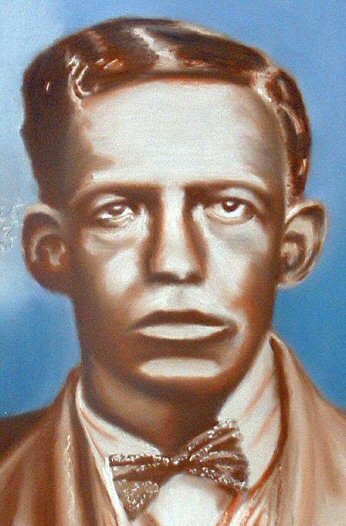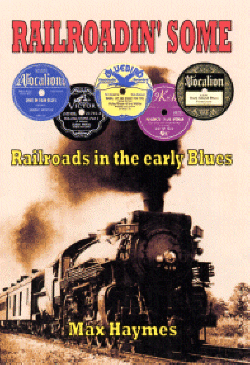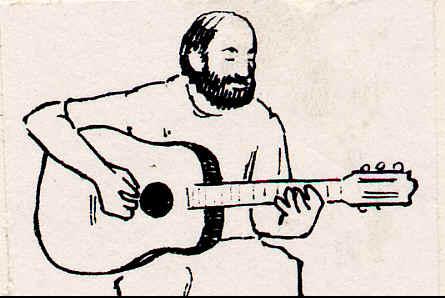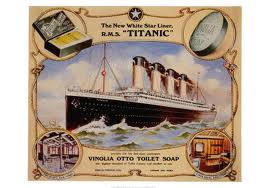
Painting © 2004 Loz
Arkle
Website
© Copyright 2000-2011 Alan White - All
Rights Reserved
Site optimised for Microsoft Internet Explorer
The Titanic and The Blues |
|
This essay is taken from Mike Ballantynes's website www.mikeballantyne.ca . Mike has kindly agreed for me to publish it on the Earlyblues website. Thanks Mike.
Ma Rainey’s Titanic Man Blues [see Mike Ballantyne's transcription] recorded in New York in December 1925, is the first documented blues that refers in any way to the sinking although, in true blues fashion (and Ma Rainey style), the song refers not to the actual disaster but to her wastrel companion who is compared to the Titanic:
Rig you up
like a ship at sea, Virginia Liston’s Titanic Blues, recorded in Chicago on the 29th of May the following year, was the next blues recorded. It was structured in much the same way as Ma Rainey’s Titanic Man Blues and it used a small part of that song’s chorus but it was more a ballad about the actual sinking. Richard ‘Rabbit’ Brown’s Sinking of the Titanic [DB–1, p. 40-41], recorded in New Orleans on March the 11th 1927, is again a ballad of the disaster — essentially a broadside and, although it is included in blues discographies, it has little else to associate it with the blues. In fact, only Brown’s James Alley Blues is of any real consequence in this respect, all the rest of his recorded sides appear to be commercial, popular songs and the like. A most excellent song, [Wasn’t It Sad] When That Great Ship Went Down, recorded by the husband and wife duo William & Versey Smith in August of the same year [DB–1, p. 408], is a later version of an original broadsheet written about the time of the sinking [Laws, D 24], of the same title, but also known as both The Titanic, and Husbands & Wives, and even as a combination of these two titles. The Smith’s version is a blues adaptation sung with a wonderfully wild blues spirit. In December, 1929 Blind Willie Johnson recorded his great, gospel blues God Moves on the Water and, four years later, a variant of the song was collected by the Lomax’s, from the singing of “Lightning” Washington, at the Darrington State Farm (penitentiary), in Sandy Point, Texas. ‘Hi’ Henry Brown’s Titanic Blues (1932) is a legitimate blues and, like Leadbelly’s The Titanic [LS, p.26] tells the tale again from the disaster point of view. Brown’s Titanic has another important attachment to blues history. Brown is apparently accompanied on the recording by Charlie Jordan (aka “Uncle Skipper”), who is cited elsewhere on Mike Ballantyne's website in connection with his own song Keep It Clean. The words of Brown’s Titanic can be found in Bob Macleod’s transcriptions [Y2, p. 96]. Leadbelly’s The Titanic was probably composed by him in the ’Thirties but is adapted from Virginia Liston’s Titanic Blues and was not recorded by him until his Library of Congress, Folkways, Last Sessions recordings of 1948. Today, Ma Rainey’s Titanic Man Blues can be found in the repertoire of Traditional jazz bands, usually without 'Man' of the title, presumably so that the sexes can be changed round to accommodate male singer’s identity. Leadbelly’s Titanic remains a staple of acoustic blues singers, and When That Great Ship Went Down, outside its brief adoption into the blues repertoire, has remained in the white, folk music tradition since being recorded by Woody Guthrie and, subsequently, being taken up by Pete Seeger in particular. Copyright Ó Mike Ballantyne 2010 __________________________________________________________________________
Notes:
References:
Mike Ballantyne
For further details see Mike's website www.mikeballantyne.ca __________________________________________________________________________
Website © Copyright 2000-2011 Alan White. All Rights Reserved. |








 On April
the 10th 1912 the Royal Mail Steamer Titanic sailed on her
maiden voyage from Southampton. Shortly before midnight on the 14th of April she
struck an iceberg and, a little over two and a half hours later, she sank with
the loss of 1,517 passengers and crew. Considering the enormity of the disaster
it is not surprising that a great number of songs were either written about the
tragedy or referred to it in one form or another. The number of blues, however,
appears to be relatively small, although the number recorded probably does not
properly reflect either of the number of blues that were composed or the order
in which they were written, nor, for that matter, when they were written.†
On April
the 10th 1912 the Royal Mail Steamer Titanic sailed on her
maiden voyage from Southampton. Shortly before midnight on the 14th of April she
struck an iceberg and, a little over two and a half hours later, she sank with
the loss of 1,517 passengers and crew. Considering the enormity of the disaster
it is not surprising that a great number of songs were either written about the
tragedy or referred to it in one form or another. The number of blues, however,
appears to be relatively small, although the number recorded probably does not
properly reflect either of the number of blues that were composed or the order
in which they were written, nor, for that matter, when they were written.†
 Mike is a singer
who formerly sang folksongs, folk-blues and blues, together with some country
and jazz. Now, with more than forty years singing experience behind him, and to
the exclusion of all his previous repertoire, he is devoting himself exclusively
to early blues and, for the most part, to their earliest documented lyrics as
they were sung and recorded in the 1920’s and 1930’s. These blues, for the most
part, form a fun and varied repertoire of blues, hokum, ragtime and jug band
songs, rather different from stereotypical, often slow and rather maudlin
twelve-bar blues.
Mike is a singer
who formerly sang folksongs, folk-blues and blues, together with some country
and jazz. Now, with more than forty years singing experience behind him, and to
the exclusion of all his previous repertoire, he is devoting himself exclusively
to early blues and, for the most part, to their earliest documented lyrics as
they were sung and recorded in the 1920’s and 1930’s. These blues, for the most
part, form a fun and varied repertoire of blues, hokum, ragtime and jug band
songs, rather different from stereotypical, often slow and rather maudlin
twelve-bar blues. 